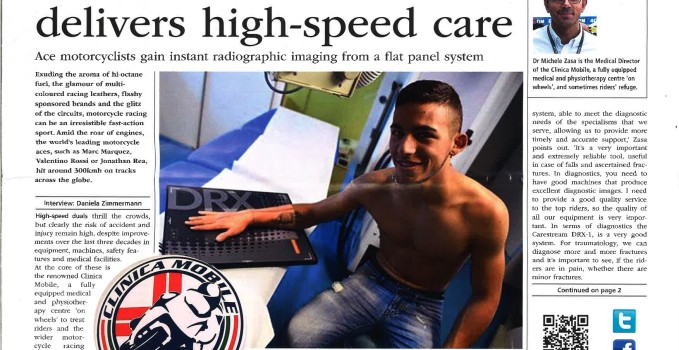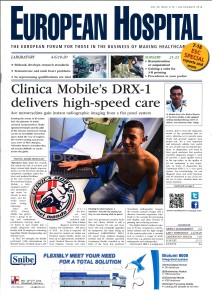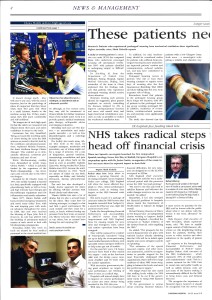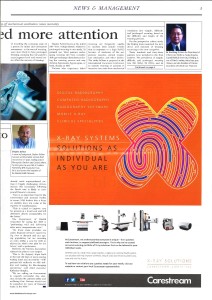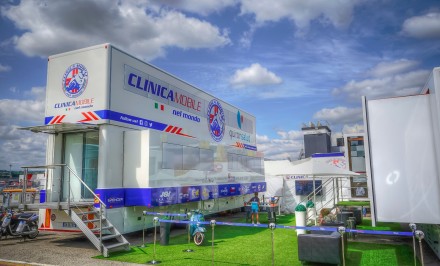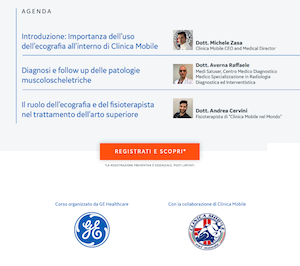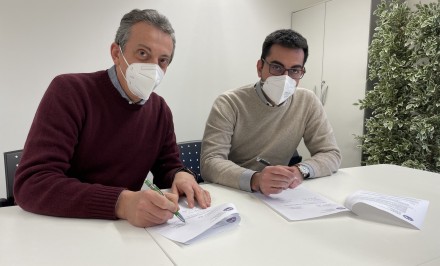European Hospital (vol 26 issue 3/16 – July August 2016) – “Clinica Mobile’s DRX-1 delivers high speed care”
Exuding the aroma of hi-octane fuel, the glamour of multi-coloured racing leathers, flashy sponsored brands and the glitz of the circuits, motorcycle racing can be an irresistible fast-action sport. Amid the roar of engines, the world’s leading motorcycle aces, such as Marc Marquez, Valentino Rossi or Jonathan Rea, hit around 300kmh on tracks across the globe.
High-speed duals thrill the crowds, but clearly the risk of accident and injury remain high, despite improvements over the last three decades in equipment, machines, safety features and medical facilities. At the core of these is the renowned Clinica Mobile, a fully equipped medical and physiotherapy centre ‘on wheels’ to treat riders and the wider motorcycle racing entourage. Since the 1970s, Clinica Mobile has grown from a group of caring and enthusiastic practitioners carrying medical boxes to race circuits into a mobile diagnostic and treatment facility with 50 employees attending Superbike World Championship and MotoGP races. In 2015, for example, the facility performed 2,966 interventions for MotoGP alone, of which about 1,245 were for drivers and 1,721 for paddock staff. ‘Very often it helps diagnose and treat minor injuries, but sometimes – 359 times in 2015 – an X-ray is required. All this must be carried out within our 65-metre square facility, which can treat up to eight patients simultaneously,’ Medical Director Dr Michele Zasa explains.
Circuits now have their own permanent medical facilities, but Clinica Mobile is still a critical resource for care and treatment. The unit constantly upgrades its equipment, the latest being an additional Carestream DRX-1 flat panel from medical imaging systems and IT solution specialist Carestream Health. Installed at the back of the truck this produces immediate radiographic images; the console captures images and a detector forwards exposures wirelessly to the console for processing and display, and then onward to printing and archiving systems. The digital detector reduces exposure to X-rays compared to conventional systems and the light weight of the system makes this a versatile tool to conduct a range of traditional tests, e.g. general and trauma radiography and orthopaedics.
‘Carestream’s DRX-1 is a high-tech system, able to meet the diagnostic needs of the specialisms that we serve, allowing us to provide more timely and accurate support,’ Zasa points out. ‘It’s a very important and extremely reliable tool, useful in case of falls and ascertained fractures. In diagnostics, you need to have good machines that produce excellent diagnostic images. I need to provide a good quality service to the top riders, so the quality of all our equipment is very important. In terms of diagnostics the Carestream DRX-1, is a very good system. For traumatology, we can diagnose more and more fractures and it’s important to see, if the riders are in pain, whether there are minor fractures.
‘It doesn’t change much – they will race in any case, with the minor fractures, but for the psychology of riders it’s important that they know when they feel pain that there is a small fracture, thanks to the machine seeing this. If they understand, they feel more comfortable and self-confident.’
The images are of such high quality that the riders are reassured and relaxed about their pain and raises confidence to return to the track. While life-threatening crashes have diminished in recent years, Clinica Mobile – which is privately funded by the organisers of the World Championship – has developed and evolved due to the inherent dangers. Founded by Dr Claudio Costa in 1977, this mobile hospital is housed in a lorry, specifically equipped with physiotherapy beds, as well as X-ray, medical ventilator, high intensity laser therapy and thermotherapy equipment used for inflammation and muscle relaxation.
Since 1977, Clinica Mobile staff have provided emergency treatments and saved many riders’ lives, with the unit keeping pace with medical advances throughout the years. In 1988, this unit even received the blessing of Pope John Paul II. However, its role has altered with the building of permanent medical centres at each circuit to deal with life-threatening emergencies.
Nowadays, riders who crash on track are treated by local medical personnel in the circuit medical centre although, in less serious cases, they may still be transferred to Clinica Mobile for further treatment. Most of the mobile unit’s work is to provide generic medical treatments, pain therapy, orthopaedic advice and imaging evaluation.
Attending each race are two doctors – an anaesthetist and orthopaedic specialist – as well as four physiotherapists and a radiology technologist.
The facility also treats many others who work at the track, for example managers, mechanics and journalists, any of whom might suffer a range of ailments. ‘It’s a mix of diagnostics, general medicine, traumatology consultation, and pain therapy to get riders back on the track as soon as possible,’ explains Zasa who, having worked for Clinica Mobile since 2011, became the unit’s Medical Director in 2014. ‘You’ll see plenty of riders on our beds, especially on Friday and Saturday afternoon, having physiotherapy treatments.’
The unit has also developed a family doctor approach for riders by offering GP-style services with blood checks and other tests.
‘Clinica Mobile has seen a lot of drama, but it’s also a second home for the riders. They come here for relaxing massages, or simply to chat and find a good environment. We cook outside and they come for a snack, or lunch, without having any pressure from their team, or journalists. This is very nice. They come not as top riders, but as normal boys having fun and enjoying life.’
Further details www.carestream.com

